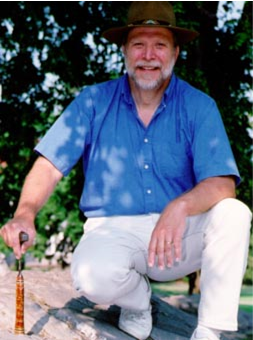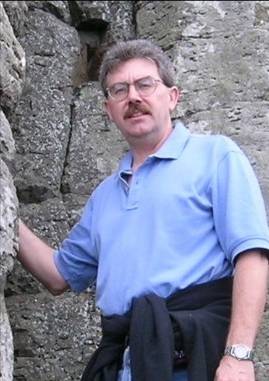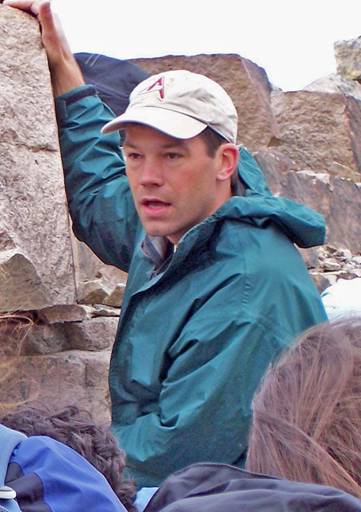James Madison University - Department of Geology & Environmental Science
Evolution is More Than Darwinism:
Elaborating, Self-Organizing, and Fractionating Systems
Expanding Evolutionary Theory Beyond Darwinism with Elaborating, Self-Organizing, and Fractionating Complex Evolutionary Systems
Fichter, Lynn S., Pyle, E.J., and Whitmeyer, S.J., 2010, Journal of Geoscience Education (in press)Self-Organizing Evolutionary Mechanisms
Resources at bottom of pageSelf-organizing evolutionary processes are the most widespread, common, and diverse, and are imbedded in complex systems thinking. Chris Lucas, for example, says, “Complexity Theory states that critically interacting components self-organize to form potentially evolving structures.” At Lucas' website he provides a wide range of resources and programs for exploring these. Further exploration can begin with these books Waldrop, 1992; Johnson, 2002; Sole', 2002; and, Strogatz, 2004. There are numerous other books available.
Theoretically, self-organizing systems are modeled by a variety of mathematical models, including:
1. Dissipative structures
2. Self-Organized Criticality
3. Boids
4. Cellular automata
5. Network theory
6. Autocatalytic networks
7. Oscillating chemical reactions
What is common to most of these theories is that the agents interact through simple rules to produce complex outcomes. Many of these models were developed for specific purposes, but most of them have wider applications. Self-organization is common in growth and development processes (Goodwin, 2001), phytotaxis in plants, development of social and ecological networks (Epstein and Axtell, 1996), and the functioning of biochemical pathways. Self-organizing theories are used to explain how networks evolve (from the World Wide Web to social networks, to ecosystems, Barabasi, 2003); how ants without central leadership build a colony that looks like it has design and purpose (Resnick, 1994); turbulence in fluids, cross bedding in sediments, river drainage patterns, evolution of earthquake systems, crystal growth, growth of urban sprawl, patterns in animal pelts and shells, the shape of spiral galaxies, and a host of others. Ball (2001) gives a wide array of examples from many disciplines. Flake (2000) explicates the computational algorithms for a variety of self-organizing systems.
Resources
For as diverse and sometimes complex as self-organizing theories are, self-organization can be easily explained and demonstrated with computer models. A vast and rapidly growing literature on these theories exists, ranging from qualitative explanations to highly mathematical explorations. A search of the WWW or books on Amazon.com on self-organization reveals a plethora of resources. Below are several resources that introduce these ideas at a level accessible to almost anyone.Self-organized Criticality (SOC)
Per Bak (1999) and colleagues modeled the SOC theory as a sandpile, and then applied it to a wide variety of other systems. The metaphor of the behavior of a sandpile is a very effective description of self-organized criticality. Wikipedia also has a nice explanation of SOC. Jensen (1998) provides a mathematical exploration.
Boids - flocking self-organization
were originally developed by Craig Reynolds (2001) in 1986 to demonstrate the simple rules of flocking and schooling behavior. Since then dozens of flocking programs have been written, many available for free download from the WWW.
- Reynolds web site is a compendium of papers and programs.
- Cool School - Cool School simulates a school of fish and predators using behavioural modeling. A real-time three-dimensional rendering of the simulation is displayed, and the user can interactively adjust the parameters of the behaviour models.
- JavaAnts - an ineractive applet
- Floys - a school of fish chase down and devour another alien fish
Cellular Automata
consist of a grid of cells whose states change (or remain the same) depending on simple rules dependent of the states of their neighbors (see introduction to Cellular Automata). Visually these are some of the most effective examples of self-organization. Levy (1993) gives a basic introduction, but most of the literature is highly mathematical. Cellular automata are widely used as a research tool in disciplines as diverse as physics, chemistry, biology, sociology, anthropology, and others. Many free downloadable computer versions are available.
- Life3000 - This is one of the earliest, simplest, and easiest to use cellular automata written by David Bunnell. This is the one we have our students experiment and play with. A series of experiments using this program are available. The program allows one of the simplest demonstrations of self-organization; use the mouse to swirl an array of random cells with at least 200 live cells and let it run. After varying times of activity the system will self-organize into simple static or oscillating groups of live cells, and it will do so every time regardless of the starting state.
- Life32 - a free downloadable CA that is flexible, powerful, and adaptable.
- Mirek's Cellebration or Mcell A very nice free downloadable CA that comes with hundreds of files demonstrating different behaviors CA are capable of. It also contains information on the wide diversity of rule sets that are possible, and allow modeling of many other kinds of systems, such as oscillating chemical reactions and "factories" that generate continuous stings of gliders that move across the page. In particular look at the “Must See” folder.
- MJ cell - an applet version
Diffusion Limited Aggregate (DLA) applet - a DLA is a fractal growth model that demonstrates how a random process following very simple rules can produce self-organized patterns.
Oscillating Chemical Reactions Reaction-Diffusion and Activator-Inhibitor reactions; also sometimes called chemical clocks)
- The Belousov-Zhabotinsky reaction is a spatio-temporal chemical oscillator. Discovered by Boris P. Belousov in 1951 his paper on the reaction was rejected as being impossible. Later in 1961, a graduate student named A. M. Zhabotinsky rediscovered this reaction sequence. These now fall in the realm of oscillating chemical reactions, including reaction diffusion and activator inhibitor systems (Prigogine, 1984, and Ball, 2001). Downloadable programs are:
- Five Cellular Automata - CA's are often used to model oscillating chemical reactions
- Also, search Google/Videos under "oscillating reactions", "oscillating chemical reactions" and similar search words. There are some nice, short demonstrations.
 Lynn S. Fichter
Lynn S. Fichter
 Steve Baedke
Steve Baedke
 Eric Pyle
Eric Pyle
 Steve Whitmeyer
Steve Whitmeyer